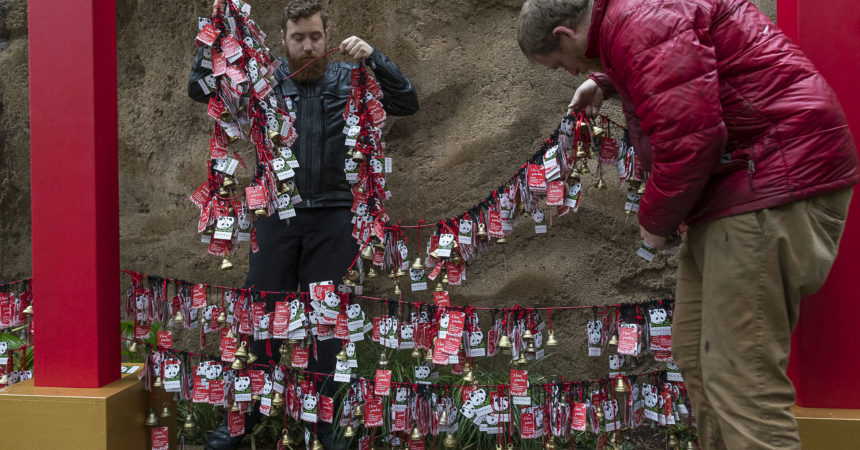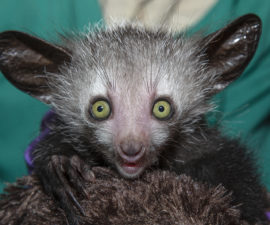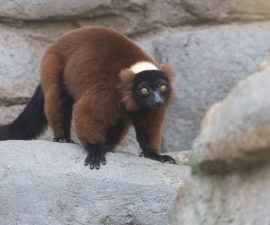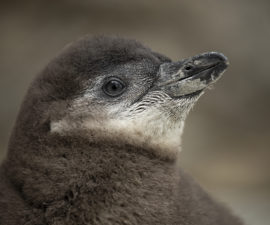Early this morning (April 30, 2019), the San Diego Zoo’s popular red and gold Giant Panda Friendship Wall was dismantled, marking the end of a month-long farewell celebration for the pandas. The wall provided guests an opportunity to symbolically say goodbye, hanging personal messages and commemorative bells, while celebrating the successful completion of significant conservation work during the Zoo’s 23-year panda conservation loan agreement with the People’s Republic of China.
The Giant Panda Friendship Wall, located across from the entrance to the Zoo’s Giant Panda Research Station, was removed one day after the panda habitat closed permanently to the general public—providing more time for animal care staff to continue their task of preparing 27-year-old female giant panda Bai Yun (pronounced bye yoon) and her son, 6-year-old Xiao Liwu (pronounced sshyaoww lee woo), for their trip to China later this spring. Zoo officials said they will now store the wall and its thousands of bells and tags from well-wishers, with the hope of erecting the structure again if pandas return to the San Diego Zoo.
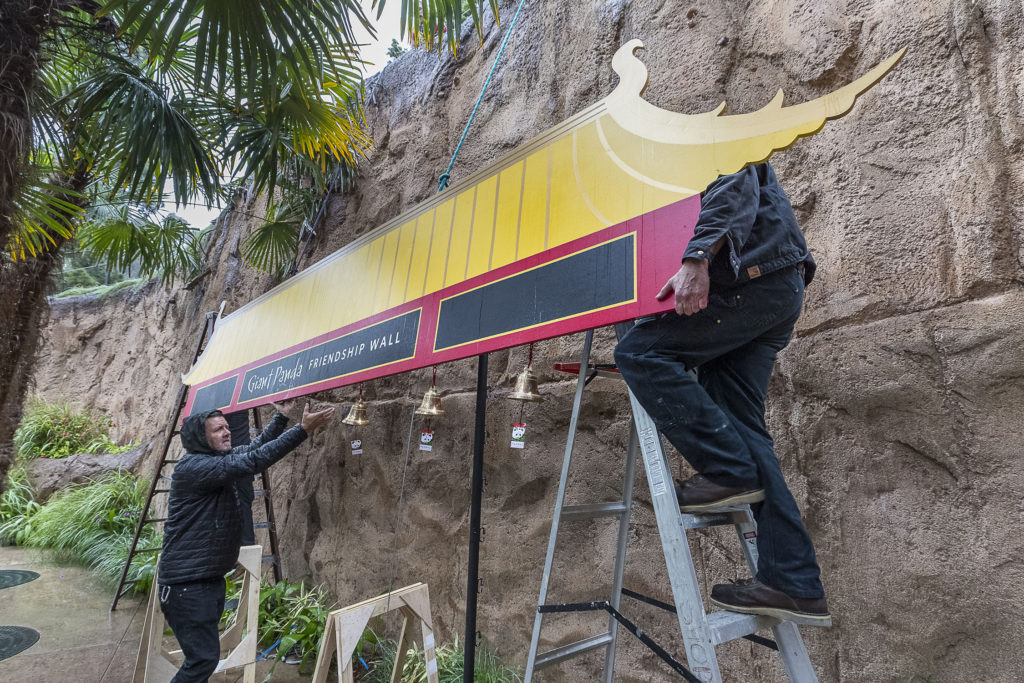
“Although we are sad to see Bai Yun and Xiao Liwu go, we have great hopes for the future,” said Dwight Scott, director of the San Diego Zoo. “We will continue to work with our partners in China for the next stage of our panda program.”
Decades ago, when San Diego Zoo Global started working with giant pandas, the species was on the verge of extinction. The Zoo became part of an international collaboration that included the China Wildlife Conservation Association (CWCA), the China Conservation and Research Center for the Giant Panda (CCRCGP), the U.S. Fish and Wildlife Service, and other accredited zoos and conservation organizations, in an unprecedented international effort to prevent a panda extinction event.
Since then, conservation scientists around the world, including scientists from San Diego Zoo Global, have helped the Chinese people raise awareness for the plight of pandas in their native habitat. Bai Yun, Gao Gao (who returned to China in October 2018) and Bai Yun’s cubs—including her sixth cub Xiao Liwu—helped scientists learn a great deal about panda behavior, pregnancy, births, and maternal and geriatric care. This knowledge has contributed to Chinese efforts to help boost the wild population of giant pandas in China to nearly 2,000 individuals.
Building a sustainable population of giant pandas under human care has contributed to the growing population, and has provided pandas for reintroduction into protected areas in China. Their increased numbers, along with policies put in place by the Chinese government, led the International Union for Conservation of Nature’s Red List of Threatened Species to “downlist” the giant panda’s status from Endangered to Vulnerable—meaning that while threats to pandas’ survival remain high, indicators show the species is in less danger of extinction than before, and that conservation efforts are working. In the wake of this accomplishment, conservationists are determined to create a plan to continue the conservation momentum, and the return of Bai Yun and Xiao Liwu to China is a part of that overall strategy.
Zoo guests and panda fans all over the globe are invited to continue sharing their memories of pandas and their hopes for the species on their social media channels—using #pandas4ever.

